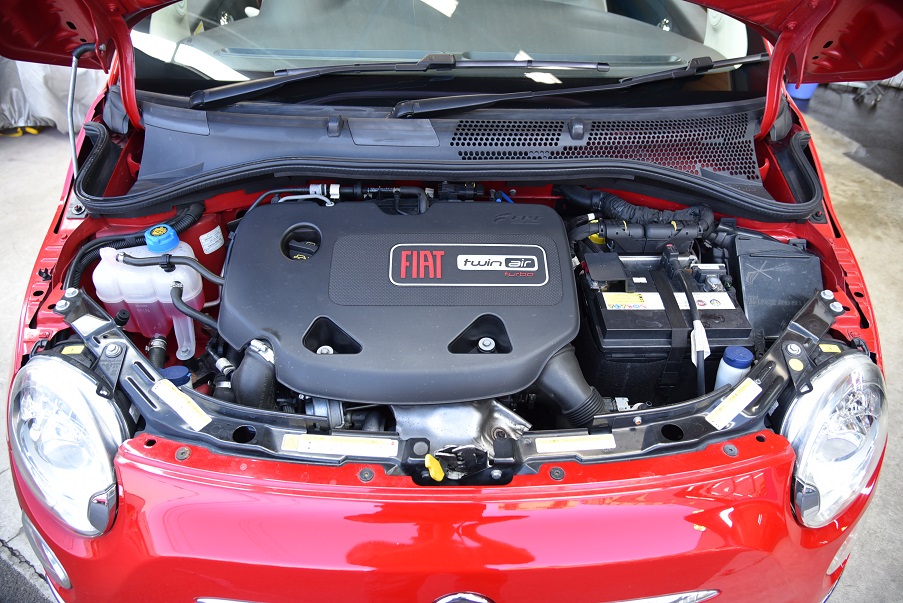人気!900cc ツインエアーターボ フィアット500 ツインエアー ラウンジ ガラスルーフ 走行38千km 入庫!
2020年10月02日
人気!900cc ツインエアーターボ フィアット500 ツインエアー ラウンジ ガラスルーフ 走行38千km 入庫!【TOY CAR LAND栗東店】
900cc ツインエアーターボ ラウンジ上級モデル ガラスルーフ AAC 純正アルミ メッキバンパーモール スタート&ストップ ARS ヒルホールド 純正CDオーディオ 走行38千km ガラスコーティング無料!点検整備付 全国納車 陸送料無料!
オシャレなイタリアンコンパクト!チンクエチェント ゾクゾク新入庫!!
今回は、上級モデルのラウンジ ツインエアー の入庫です
人気の900CC ツインエアーターボエンジン スタート&ストップ付 エンジョイ&エコノミー!
クロムモール、バンパーが魅力的な、チンクです。
ボディーもガラスコーティング済みでピッカピカです
大きな、ガラスルーフ 開放的なパノラマの風景をお楽しみいただけます。
走行距離は、38千km と少なく これからが本番! 機関も良好な車輌です。
本日入庫!TOY CAR LAND栗東店にて展示開始いたします。
車輌の詳細は、コチラをご覧下さい。
とってもおススメですー。
この記事へのコメント
(Venetta)
Metandienone Wikipedia
**General information on DHEA (dehydroepiandrosterone)**
| Topic | Key points |
|-------|------------|
| **What it is** | ? A steroid hormone produced mainly by the adrenal glands, but also by the ovaries and testes.
? Precursor to sex hormones (estrogen, testosterone).
? Levels peak in early adulthood and decline with age. |
| **Common uses reported by people** | ? Supporting healthy aging
(energy, mood, sleep).
? Enhancing libido or sexual function.
? Improving exercise performance and recovery.
? Managing mild symptoms of menopause or low estrogen.
? Some use it for general "well?being" or "balance." |
| **How people take it** | ? Oral capsules/tablets (often 25?50?mg per dose).
? Doses vary: 1?3 times daily, total 50?150?mg/day.
? Some use a lower maintenance dose after an initial "loading"
period.
? No standardized protocol?people often follow online recommendations or personal experimentation. |
| **Typical side?effects reported** | ? Minor gastrointestinal upset (nausea, bloating).
? Dizziness or light?headedness in some users.
? Rare reports of headaches or fatigue.
? Most people find it well tolerated; serious adverse events are uncommon. |
| **Safety profile for long?term use** | ? No large clinical trials on extended duration, but no major safety signals have been observed
in anecdotal evidence.
? Because the compound is a small organic molecule and not a hormone, it is
unlikely to cause endocrine disruption.
? Monitoring of liver enzymes and general well?being would be prudent if used over many months.
|
---
## 4. Practical Guidance for Your Project
| Consideration | Recommendation |
|---------------|----------------|
| **Dose** | Start with the low?dose range (?0.1?0.5??g/kg) as
these have shown benefits in pre?clinical studies while minimizing any risk of overt hormonal effect.
|
| **Administration** | Oral gavage or incorporation into feed/water is feasible for large?scale trials.
Ensure consistent dosing by using a calibrated syringe or micro?dose feeders.
|
| **Duration** | Pilot the compound over 4?8?weeks, then extend to longer periods
(12?16?weeks) if no adverse effects are observed.
|
| **Monitoring** | Record growth performance, feed conversion ratio, and
health parameters weekly. At the end of trial, assess reproductive organ weights, hormone levels (e.g.,
testosterone), and histopathology to confirm absence of endocrine disruption. |
| **Regulatory Considerations** | Since the compound is a natural product from an edible plant,
regulatory hurdles may be lower, but ensure compliance with
local feed additive guidelines. Obtain permits if required
for field trials. |
---
## 5. Practical Recommendations
1. **Start Small**
- Conduct pilot trials on a few hundred birds to evaluate safety and efficacy before scaling up.
2. **Dose Optimization**
- Test multiple inclusion rates (e.g., 0.01%, 0.05%, 0.1%) to
find the minimal effective dose that provides benefits without affecting
feed intake or palatability.
3. **Monitor Key Parameters**
- Record body weight gain, feed conversion ratio, mortality,
and any behavioral changes.
- Check for possible residue accumulation in eggs or meat if
the birds are raised for egg production or human consumption.
4. **Consider Synergy with Other Additives**
- The compound may interact positively with probiotics or enzymes; however,
be cautious of antagonistic effects.
5. **Regulatory Compliance**
- Ensure that the use of this material complies with local regulations regarding feed additives and
food safety for consumers.
6. **Economic Assessment**
- Calculate the cost-benefit ratio: how much does the additive cost per bird, and what is
the expected improvement in production metrics?
7. **Long-Term Monitoring**
- Monitor health indicators such as mortality
rates, feed conversion ratios, and body weight gain over multiple flocks
to confirm consistency.
### Bottom Line
- The material shows promise as a feed additive that could
improve growth or immunity.
- A small pilot trial is essential before scaling up.
- Regulatory approval and cost analysis must be
addressed early on.
**General information on DHEA (dehydroepiandrosterone)**
| Topic | Key points |
|-------|------------|
| **What it is** | ? A steroid hormone produced mainly by the adrenal glands, but also by the ovaries and testes.
? Precursor to sex hormones (estrogen, testosterone).
? Levels peak in early adulthood and decline with age. |
| **Common uses reported by people** | ? Supporting healthy aging
(energy, mood, sleep).
? Enhancing libido or sexual function.
? Improving exercise performance and recovery.
? Managing mild symptoms of menopause or low estrogen.
? Some use it for general "well?being" or "balance." |
| **How people take it** | ? Oral capsules/tablets (often 25?50?mg per dose).
? Doses vary: 1?3 times daily, total 50?150?mg/day.
? Some use a lower maintenance dose after an initial "loading"
period.
? No standardized protocol?people often follow online recommendations or personal experimentation. |
| **Typical side?effects reported** | ? Minor gastrointestinal upset (nausea, bloating).
? Dizziness or light?headedness in some users.
? Rare reports of headaches or fatigue.
? Most people find it well tolerated; serious adverse events are uncommon. |
| **Safety profile for long?term use** | ? No large clinical trials on extended duration, but no major safety signals have been observed
in anecdotal evidence.
? Because the compound is a small organic molecule and not a hormone, it is
unlikely to cause endocrine disruption.
? Monitoring of liver enzymes and general well?being would be prudent if used over many months.
|
---
## 4. Practical Guidance for Your Project
| Consideration | Recommendation |
|---------------|----------------|
| **Dose** | Start with the low?dose range (?0.1?0.5??g/kg) as
these have shown benefits in pre?clinical studies while minimizing any risk of overt hormonal effect.
|
| **Administration** | Oral gavage or incorporation into feed/water is feasible for large?scale trials.
Ensure consistent dosing by using a calibrated syringe or micro?dose feeders.
|
| **Duration** | Pilot the compound over 4?8?weeks, then extend to longer periods
(12?16?weeks) if no adverse effects are observed.
|
| **Monitoring** | Record growth performance, feed conversion ratio, and
health parameters weekly. At the end of trial, assess reproductive organ weights, hormone levels (e.g.,
testosterone), and histopathology to confirm absence of endocrine disruption. |
| **Regulatory Considerations** | Since the compound is a natural product from an edible plant,
regulatory hurdles may be lower, but ensure compliance with
local feed additive guidelines. Obtain permits if required
for field trials. |
---
## 5. Practical Recommendations
1. **Start Small**
- Conduct pilot trials on a few hundred birds to evaluate safety and efficacy before scaling up.
2. **Dose Optimization**
- Test multiple inclusion rates (e.g., 0.01%, 0.05%, 0.1%) to
find the minimal effective dose that provides benefits without affecting
feed intake or palatability.
3. **Monitor Key Parameters**
- Record body weight gain, feed conversion ratio, mortality,
and any behavioral changes.
- Check for possible residue accumulation in eggs or meat if
the birds are raised for egg production or human consumption.
4. **Consider Synergy with Other Additives**
- The compound may interact positively with probiotics or enzymes; however,
be cautious of antagonistic effects.
5. **Regulatory Compliance**
- Ensure that the use of this material complies with local regulations regarding feed additives and
food safety for consumers.
6. **Economic Assessment**
- Calculate the cost-benefit ratio: how much does the additive cost per bird, and what is
the expected improvement in production metrics?
7. **Long-Term Monitoring**
- Monitor health indicators such as mortality
rates, feed conversion ratios, and body weight gain over multiple flocks
to confirm consistency.
### Bottom Line
- The material shows promise as a feed additive that could
improve growth or immunity.
- A small pilot trial is essential before scaling up.
- Regulatory approval and cost analysis must be
addressed early on.
[2025-09-26 22:09:00.565764]
URL









